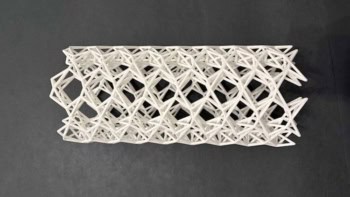
“Post-graphene” 2D materials are creating a flurry of interest in the research world at the moment because they are expected to have new and interesting electronics properties that might be exploited in next-generation devices. A team in Japan, Germany, Spain and France has now succeeded in experimentally synthesizing one such material, stanene, on a silver (111) substrate for the first time. The material, which is the tin analogue of graphene and the heaviest of its cousins, has strong spin-orbital coupling and is expected to be a robust 2D topological insulator with the quantum Hall spin effect, even above room temperature. These properties make it promising for nanoelectronics, spintronics and potential quantum computing applications.
In the last few years, researchers have made 2D materials like silicene, germanene, phosphorene and borophene on Ag(111), Au (111) and ZrB2(0001) substrates. Recent calculations showed that an Ag(111) surface could also be ideal for growing large-area high-quality monolayer stanene. A team led by Junji Yuhara of Nagoya University has now proved that this is indeed possible.
The researchers initially tried to prepare a stanene sheet directly onto a bulk-terminated Ag(111) but they found that the tin atoms chemically react with clean Ag(111) and form a 2D Ag2Sn surface alloy. They turned this problem to their advantage, however, when they discovered (thanks to both DFT calculations and experiments) that a stanene sheet could actually be synthesized onto the 2D Ag2Sn alloy.

“In fact, the Ag2Sn alloy appears to be one of the best substrates to form planar stanene thanks to its chemical and physical properties,” explains Yuhara. “It is typically chemically inert to stanene and there is perfect lattice matching between the planar stanene and the surface alloy.”
The researchers determined the crystalline structure of the stanene using scanning tunnelling microscopy, which is a highly surface-sensitive tool with a depth resolution of less than 0.01 nanometres (10 picometres). They found that the height of the Sn atoms in the stanene sheet varies by less than 5 pm and that the 2D material is also perfectly crystalline on the large scale. They backed up these findings with first-principles simulations of how 2D stanene behaves on an ordered Ag2Sn alloy, as well as with other experimental techniques like high-resolution synchrotron radiation photoemission spectroscopy.
Compatible with silicon technology
“As mentioned, stanene is the heaviest elemental cousin of graphene and thanks to its strong orbital-coupling and the fact that it is expected to be a robust 2D topological insulator, it might be ideal for spintronics applications and for making topological superconductors,” Yuhara tells nanotechweb.org. “And, last but not least, it is compatible with silicon technology, so stanene field-effect transistors might possibly be made using the same procedures used to realize the first silicene FETs.”
The team, which includes researchers from the Aichi Synchrotron Radiation Center, the Universidad del Pais Vasco in Bizkaia, the Max Planck Institute for the Structure and Dynamics and Matter in Hamburg and Aix-Marseille University, say that it is now busy characterizing the edge states in stanene. “We are also looking at how to detach the material we have made from its substrate so that we can characterize its electronic properties,” says Yuhara. “We will then be making plumbene, graphene’s lead cousin.”
The research is detailed in 2D Mater. 5 025002.



